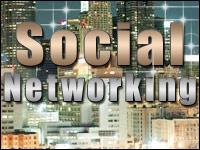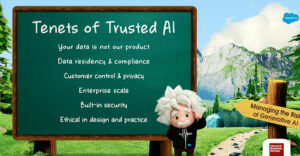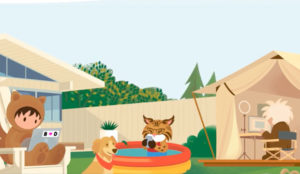
I have a friend who’s a musician, author and former radio personality, and he likes Facebook. A lot.
My newsfeed is clogged with his posts — news from his life, comments about music and movies, photos of his travels, videos of songs, links to other people’s articles. I don’t think there’s any possible way he could actually view or read all the things he posts, but there they are.
“It’s my thing,” he said when I called him on it. “Ever since I left radio, I’ve missed being able to share things with people. Now, Facebook is my radio.”
That got me thinking a bit. I pay special attention to how businesses use social media, just because of my job. Even though social media offers all kinds of possibilities for engagement and new ways of relating to customers in a peer-to-peer way, for most businesses it’s their radio, too — it’s primarily a means of broadcasting messages to an audience. Period.
Listen for the Bounce
That take completely misses the point of social media, and it must change if businesses are going to harness the power of social media, and if social CRM is going to flourish, because it ignores the most significant aspect of the new customer communication channels.
Social media is less like radio and more like radar, where you transmit a signal and then listen for the return signal. The return messages in social media are incredibly valuable — like radar returns, the responses you get can help you draw a clearer picture of your customers, and even more so if you engage directly with them. The broadcasting metaphor also ignores your business’ ability to be the return signal — to jump into a conversation where appropriate. These exchanges provide incredibly rich and valuable data for your CRM efforts, but you can’t do social CRM without being social, and you can’t be social just by broadcasting.
My friend at least has this part right — he has over 1,800 friends, and it’s rare that he fails to stimulate a conversation (but with that many friends, almost anything’s guaranteed to get at least one response). He also participates in conversations, putting him ahead of many businesses in that regard.
Letting Go of the Bottleneck
Then again, he hasn’t had to totally re-learn his behavior. Businesses have controlled the message, and they’re having to let go of that idea. Part of that control has meant the creation of a “message bottleneck,” symbolized by the appointed and approved people who are allowed to speak to anyone outside the company. That’s changing too, partly by necessity (can one or two marketing people really keep track of all the conversations going on across the social universe?) and partly because of the realization that customers like to connect with employees. It’s a much more authentic relationship.
If employees are properly trained, and if they’re allowed to include this customer interaction in their daily jobs, this isn’t the problem some people think it is — it’s an opportunity to create peer-to-peer relationships that can dramatically strengthen customer relationships.
So, if you’re on the road to social CRM, broadcast judiciously, but listen relentlessly and respond generously. The conversations your customers start with you are likely to be far more valuable and insightful than the ones you try to start with them.






















































Effective social media use (such as Facebook) should include distributing messages and assessing feedback from incoming messages to improve customer relations. Simply blasting out messages without reacting to the responses becomes another form of mass mailing conducted by companies without regard for customer needs. All too often, companies fail to ask customers about their preferences and the AM ount and manner of communication desired. In a recent survey conducted by Thunderhead, our research revealed that only 16% of respondents were asked their preference by their provider when it came to frequency of billing, policy information and statement delivery.
Capitalizing on social media without opening lines of two-way communication between companies and their consumers can create a message bottleneck where consumers can only speak to pre-approved employees. This situation becomes a terrible waste of resources. Using the exchange channel when appropriate can be an incredibly rich way to determine customer needs, wants and preferences. This instant two-way communication can be an insightful and rewarding experience for both ends, and go a long way to enhancing customer relations and brand loyalty.
For anyone wanting more info on the survey, the research is available for free at http://www.disconnectedcustomer.com.
Hello Chris Love your blog as well but still don’t know where the name CRM Outsiders came from as you are working with Sugar? None the less.. Where do you see Social CRM Merging with traditional CRM?